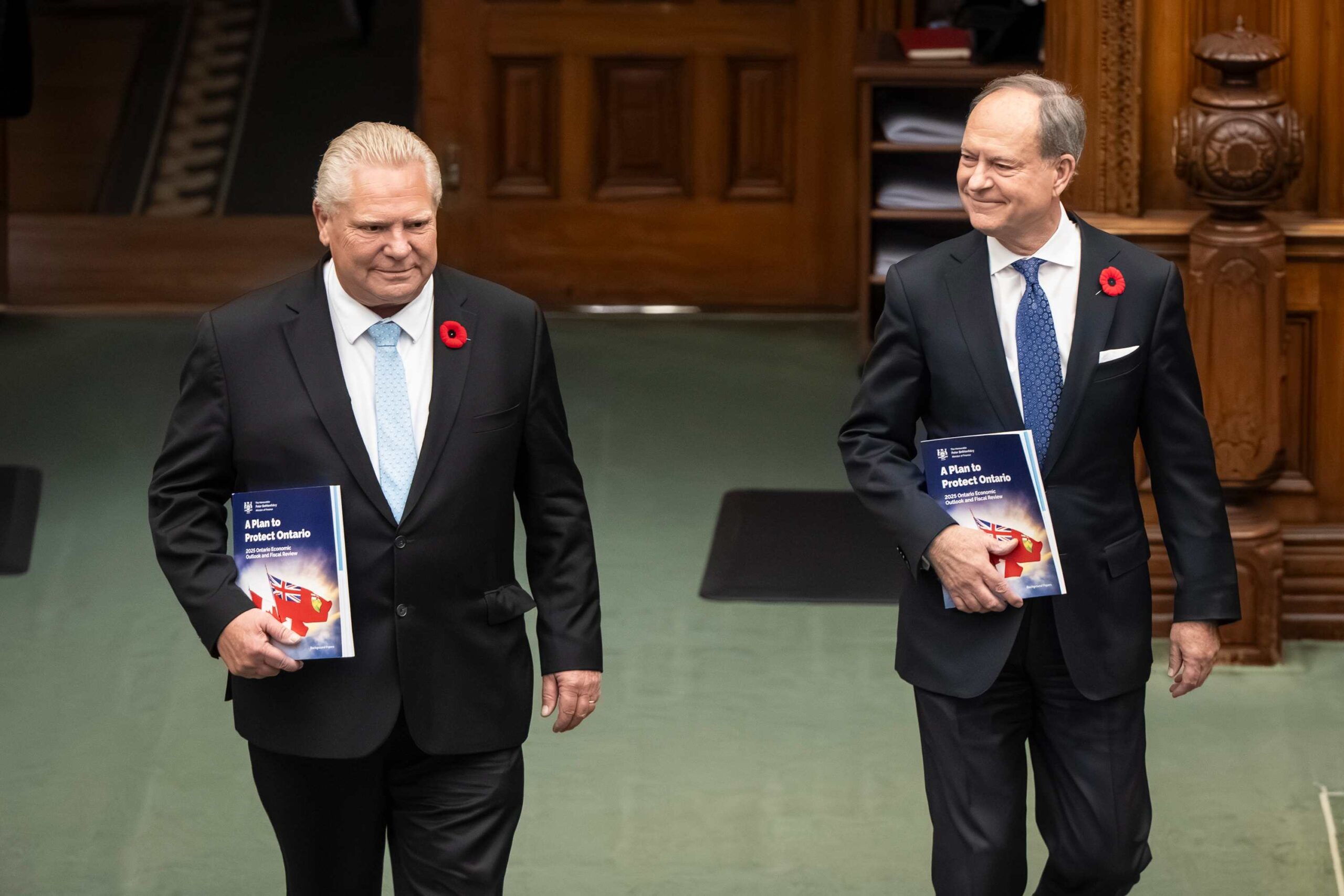The Ford Government tabled their Fall Economic Statement (FES) today, providing an update on their Plan to Protect Ontario with support for businesses and workers while boosting the economy to help weather the economic uncertainty caused by the U.S. tariffs.
Not simply an economic and fiscal update, the FES is the next chapter in the Protect Ontario theme that began in the election campaign and continued in the March Provincial Budget. Finance Minister Bethlenfalvy also used his podium to sharply contrast his fiscal and economic plan with Tuesday’s Federal Budget.
Dismissing critics of current spending levels, Minister Bethlenfalvy noted the Ford Government is performing ahead of plan with a balanced budget by 2027/28, the only large province in a position to achieve this target. At the same time, the FES underscores that Ontario must unleash the economy while protecting vulnerable jobs, workers and services in a radically shifting trade environment.
This year’s FES shows that, although the Ontario economy is being negatively impacted by U.S. trade policy and a slowing global economy, the Ontario Government believes that the right investments made today will help Ontario navigate the difficult road that lies ahead. The Province is also touting two credit rating upgrades, despite slower projected growth.
The FES is an annual exercise designed to provide key fiscal updates and serve as an outline of the government’s plans between Spring Budgets. Here is what stood out to the Counsel team in today’s Statement:
Fiscal and Economic Top Line
- Total Revenue: $223.1 billion
- Total Expense: $234.6 billion
- Deficit: $13.5 billion – down by $1.1 billion compared to projections in the 2025 Budget. The Government aims to balance the budget by 2027-28.
- Net debt-to-GDP ratio: 37.7 per cent, slightly lower than the 37.9 per cent forecasted in the 2025 Budget.
- Net debt-to-operating revenue: 208
- Employment: Growth of 0.9 per cent, owing to slowing economic activity and lower population growth.
- Housing Starts: 64,300
Major Commitments
The FES updates the status of the $30 billion in support for businesses and workers impacted by U.S. tariffs and to invigorate the Ontario economy.
- Workforce and Industry Supports
-
- An increase of $100 million to the Ontario Trade Together Fund for a total of $150 million over three years to help businesses reach new markets and customers.
-
- $600 million in the Invest Ontario fund to strengthen local businesses and secure good jobs for workers.
-
- $500 million in joint provincial and federal funding for Algoma Steel to diversify its relationships with the United States.
-
- Creating upskilling opportunities for workers who have been laid off or are at risk of being laid off by investing $20 million in Protect Ontario Workers Employment Response Centres.
- Energy and Natural Resources
-
- The inclusion of critical minerals as a new area of focus for the Building Ontario Fund – helping attract investment in job-creating infrastructure.
-
- An investment of $1 billion to build small modular reactors (SMRs) at Darlington Nuclear Station – the first SMRs in the G7.
-
- $10 million in the existing Forest Sector Investment and Innovation Program to support Ontario’s forestry sector and bring more made-in-Ontario wood products to market.
-
- $500 million for the Critical Minerals Processing Fund to allow Ontario to unlock resources that are in-demand across the globe.
- Municipal Affairs and Housing
-
- A proposal to rebate the provincial portion of the HST for first-time home buyers on new homes valued up to $1 million.
-
- An additional $1.6 billion in the Municipal Housing Infrastructure Program for home building and critical infrastructure.
-
- A $50 million increase in the Ontario Municipal Partnership Fund (OMPF), to help municipalities pay for key services.
-
- A plan to help municipalities implement traffic calming measures instead of relying on speed cameras.
- Health Care
-
- $1.1 billion over three years for home care and the Hospital to Home program, helping Ontarians receive care in the comfort of their own homes.
-
- Funding for 123 new hospital beds at Halton Health, to support local needs.
-
- Investing an additional $262 million in the Ontario Learn and Stay Grant to increase health human resources in underserved and growing communities.
What This Means for Ontario
The Ontario economy is experiencing an existential threat that is disrupting decades of mutually beneficial trade and inter-jurisdictional collaboration.
The Fall Economic Statement reinforces that the Ford government believes its Plan to Protect Ontario is working. They are investing billions of dollars to shield Ontario jobs and the hard-working Ontarians who depend upon them from the worst of the economic impact of U.S. tariffs while showing a responsible path towards a balanced budget.


